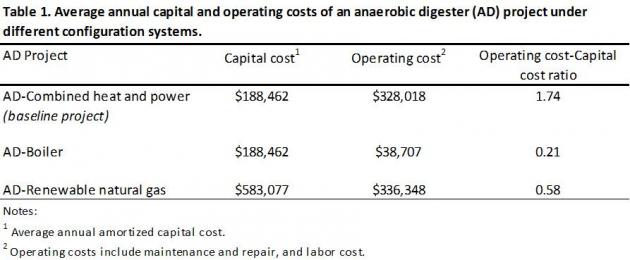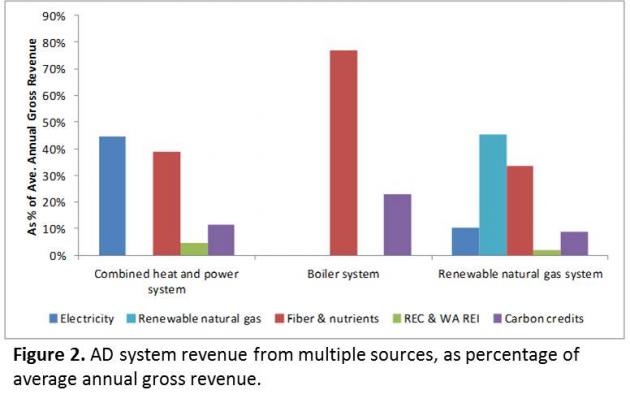Can We Approach Anaerobic Digestion Differently?
Anaerobic digestion (AD) system installations are costly and projects vary significantly depending on local circumstance. One possible business model proposed to improve the economic performance of AD systems is to use the biogas as renewable natural gas (RNG) rather than heat and electricity. Washington State University partnered with state agencies and a private project developer to study the feasibility of adding RNG to an existing commercial AD project in the Yakima Valley of Washington State.
What did we do?
We examined three alternative AD system modifications: (a) combined heat and power, which is the baseline system; (b) boiler as a substitute for combined heat and power; and (c) renewable natural gas infrastructure. Our primary objective was to highlight the findings of a case study (Coppedge et al., 2012), particularly the identification of various factors that may affect the feasibility of an AD project. We answered the following questions:
- What is the importance of the relative difference of an AD project’s operating cost with respect to its capital cost?
- How do different end-uses for biogas (e.g., heat, electricity, renewable natural gas for pipeline or transportation fuel) affect the profitability of a digester project?
- How important is revenue from fiber and nutrient co-products to digester profitability?
- How important are environmental payments (Renewable Energy Certificates, Renewable Fuel Standards credit, carbon credits) to digester profitability?
This presentation focuses on questions 2 and 4 – end-uses for biogas and environmental payments tied to the alternative renewable energy options.
What have we learned?
RNG offers promising opportunities. When available and potential renewable fuel credits are added to the commodity price of RNG, the AD project with this system can generate more net returns than with a combined heat and power system (baseline). Furthermore, if renewable fuel is sold as transportation fuel in the retail compressed natural gas market, the renewable natural gas system is more profitable than the baseline system with or without the addition of environmental incentives.

Future Plans
We have published a fact sheet (forthcoming) through WSU Extension providing a synthesis of the economic evaluation from the main feasibility study. This fact sheet (EM090E) is part of an Anaerobic Digestion Systems Manual under development with support from USDA NIFA.
Authors
Chad Kruger, Director, WSU CSANR cekruger@wsu.edu
Suzette Galinatto, Research Associate @ WSU IMPACT Center; Craig Frear, Assistant Professor @ WSU Biological Systems Engineering
Additional information
Coppedge, B., G. Coppedge, D. Evans, J. Jensen, E. Kanoa, K. Scanlan, B. Scanlan, P. Weisberg and C. Frear. 2012. Renewable Natural Gas and Nutrient Recovery Feasibility for DeRuyter Dairy: An Anaerobic Digester Case Study for Alternative Off-take Markets and Remediation of Nutrient Loading Concerns within the Region. A Report to Washington State Department of Commerce. <http://csanr.wsu.edu/publications/deRuyterFeasibilityStudy.pdf>.
Galinatto, S.P., C.E. Kruger, and C.S. Frear (2015). Anaerobic Digester Project and System Modifications: An Economic Analysis. WSU Extension Publications EM090E.
Acknowledgements
This project was supported by the WSU ARC Biomass Research Program, and USDA National Institute of Food and Agriculture Award #2012-6800219814.
The authors are solely responsible for the content of these proceedings. The technical information does not necessarily reflect the official position of the sponsoring agencies or institutions represented by planning committee members, and inclusion and distribution herein does not constitute an endorsement of views expressed by the same. Printed materials included herein are not refereed publications. Citations should appear as follows. EXAMPLE: Authors. 2015. Title of presentation. Waste to Worth: Spreading Science and Solutions. Seattle, WA. March 31-April 3, 2015. URL of this page. Accessed on: today’s date.

